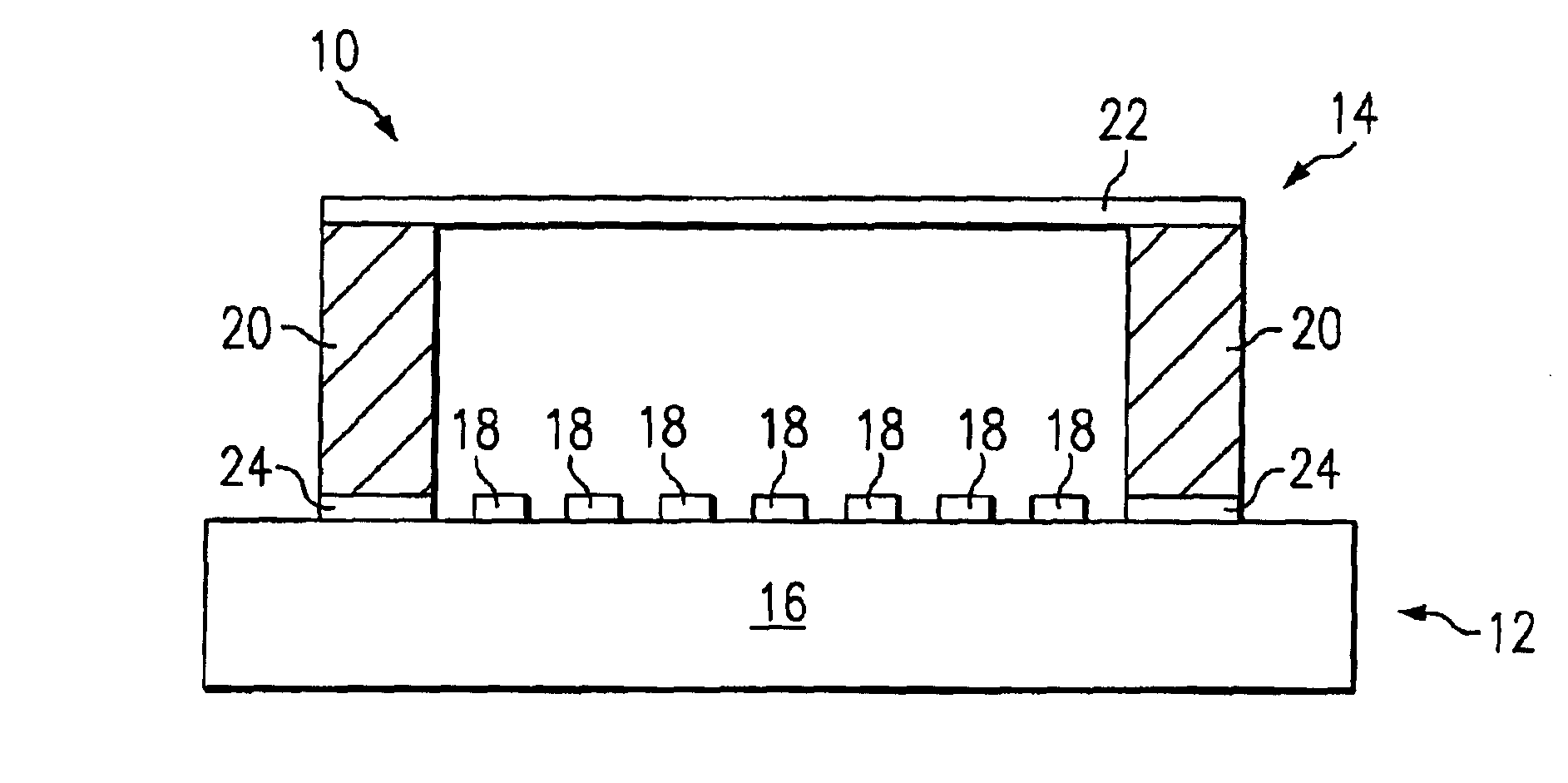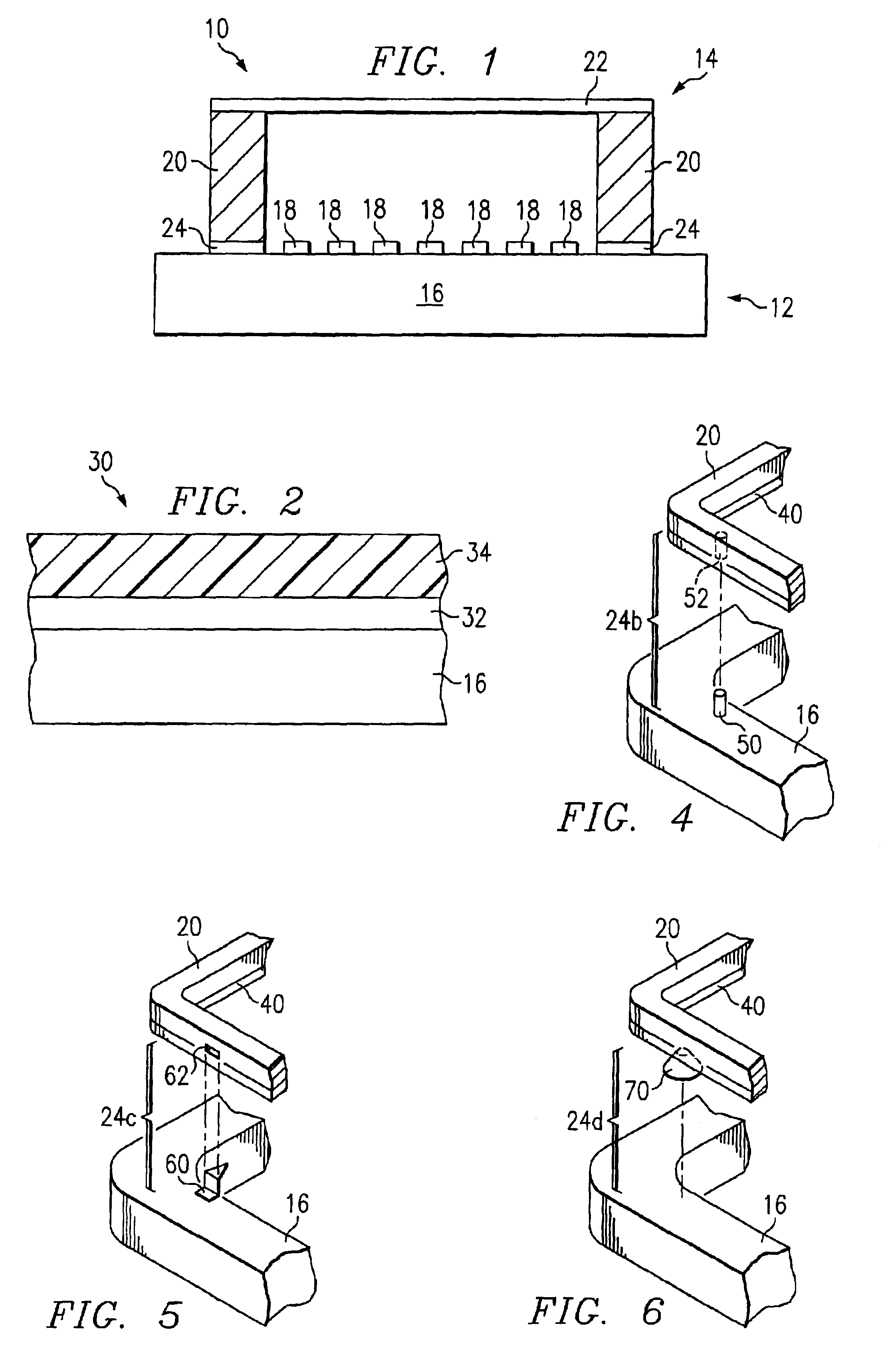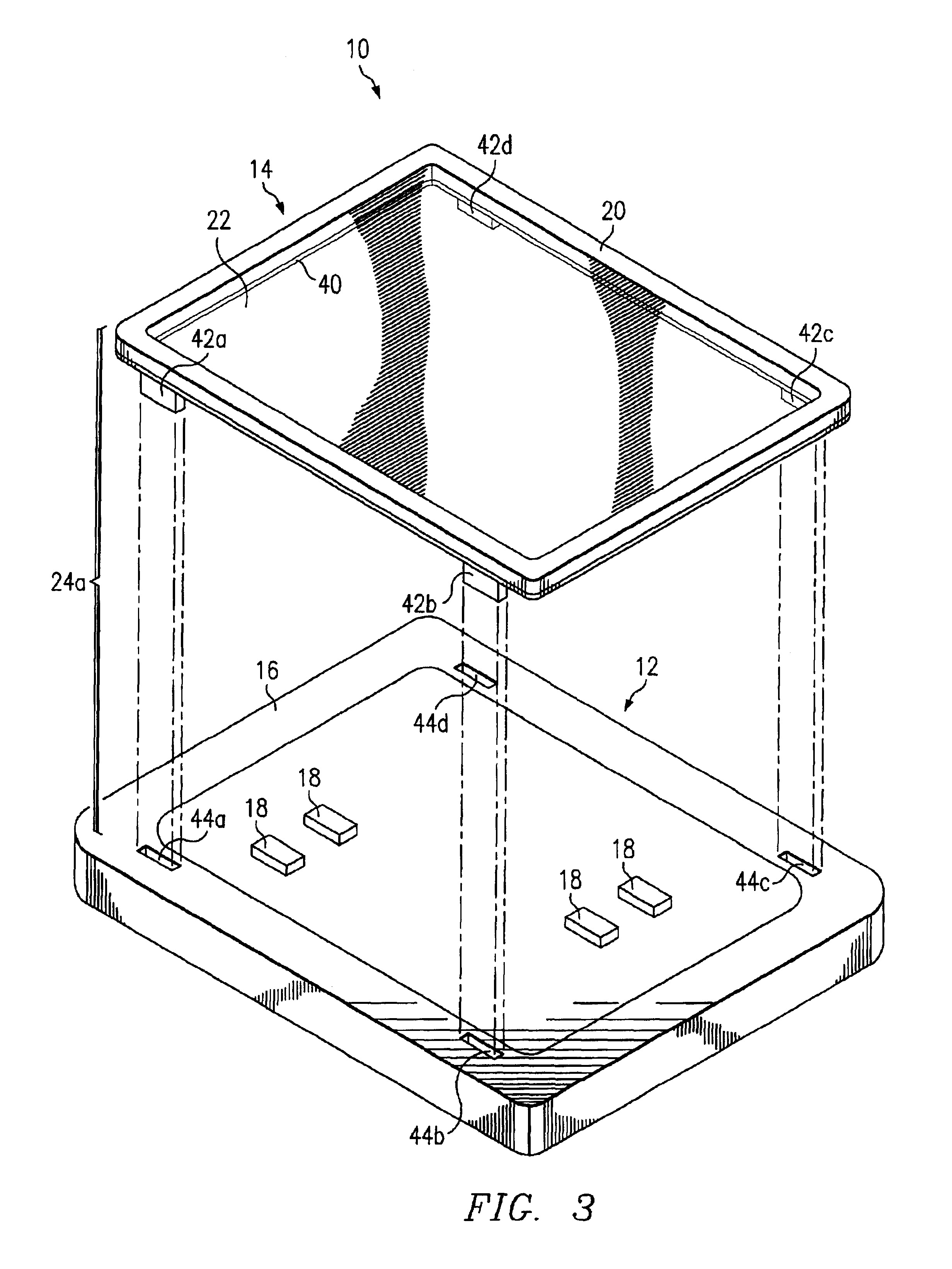Method and apparatus for coupling a pellicle to a photomask using a non-distorting mechanism
a technology of coupling mechanism and photomask, which is applied in the field of lithography, can solve the problems of photomask distortion, photomask distortion, and damage to the photomask assembly manufactured with conventional materials, and achieve the effect of reducing stress and avoiding the disadvantages of coupling a pellicl
- Summary
- Abstract
- Description
- Claims
- Application Information
AI Technical Summary
Benefits of technology
Problems solved by technology
Method used
Image
Examples
Embodiment Construction
[0022]Preferred embodiments of the present invention and their advantages are best understood by references to FIGS. 1 through 6, where like numbers are used to indicate like and corresponding parts.
[0023]FIG. 1 illustrates a cross-sectional view of photomask assembly 10. Photomask assembly 10 includes photomask 12 coupled to pellicle 14 by non-distorting mechanism 24. In a particular embodiment, non-distorting mechanism 24 provides an attachment mechanism for mounting pellicle 14 on photomask 12 and a sealing mechanism for creating a seal between pellicle 14 and photomask 12 once pellicle 14 has been mounted on photomask 12. The attachment and sealing mechanisms reduce stress that may be exerted by pellicle 14 on photomask 12.
[0024]Substrate 16 and patterned layer 18 form-photomask 12, otherwise known as a mask or reticle, that may have a variety of sizes and shapes, including but not limited to round, rectangular, or square. Photomask 12 may also be any variety of photomask types,...
PUM
| Property | Measurement | Unit |
|---|---|---|
| wavelengths | aaaaa | aaaaa |
| exposure wavelengths | aaaaa | aaaaa |
| wavelength | aaaaa | aaaaa |
Abstract
Description
Claims
Application Information
 Login to View More
Login to View More - R&D
- Intellectual Property
- Life Sciences
- Materials
- Tech Scout
- Unparalleled Data Quality
- Higher Quality Content
- 60% Fewer Hallucinations
Browse by: Latest US Patents, China's latest patents, Technical Efficacy Thesaurus, Application Domain, Technology Topic, Popular Technical Reports.
© 2025 PatSnap. All rights reserved.Legal|Privacy policy|Modern Slavery Act Transparency Statement|Sitemap|About US| Contact US: help@patsnap.com



